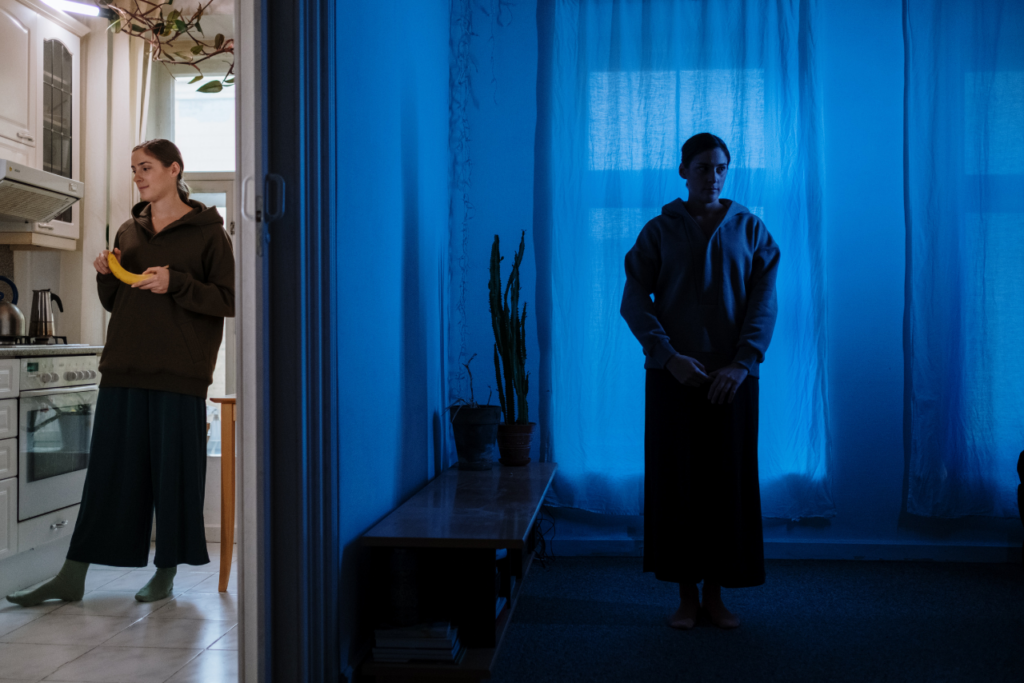In addition to having somewhat similar-sounding names, bipolar disorder and borderline personality disorder (BPD) also share a few key symptoms. However, while these disorders are often confused with each other, there are a host of distinct differences between bipolar vs. BPD.
If you or a loved one are struggling with mental health, don’t wait—call us or verify your insurance now to get the support you deserve.
What Is Bipolar Disorder?
To compare bipolar vs. BPD, it can be helpful to first review some basic information about each disorder. We’ll begin with bipolar disorder.
Bipolar disorder is a type of mental illness that is associated with sudden and drastic swings in mood and energy. This condition was once referred to as manic-depressive disorder, but that was changed to bipolar disorder with the publication of the third edition of the Diagnostic and Statistical Manual of Mental Disorders (DSM-3) in 1980.
Symptoms
Bipolar disorder is associated with three types of symptoms, or episodes. As we will address in the “Types of Bipolar Disorder” section below, a person doesn’t have to experience all three types of episodes in order to be diagnosed with this condition.
The three episode types are:
- Manic episodes: A manic episode is a period of elevated mood, energy, and motivation. During a manic episode a person’ may experience inflated self-esteem and overconfidence, exhibit little need for sleep, and engage in a range of impulsive behaviors. To qualify as a manic episode, these symptoms must persist for at least one week.
- Hypomanic episode: This is similar to a manic episode, except symptoms only last for four days.
- Major depressive episode: These are periods of at least two weeks during which a person has symptoms such as persistent sadness, fatigue, low motivation, diminished confidence and memory, and recurring thoughts of death and dying.
Types of Bipolar Disorder
Though bipolar disorder is commonly referred to as a single condition, the fifth edition of the Diagnostic and Statistical Manual of Mental Disorders (DSM-5) actually contains entries for three distinct types of the disease:
- Bipolar I disorder: The criteria for this version includes having at least one manic episode. People with bipolar I disorder may also have hypomanic and/or major depressive episodes, but neither of those are required for this diagnosis.
- Bipolar II disorder: To be accurately diagnosed with bipolar II disorder, a person must have had at least one hypomanic episode and at least one major depressive episode.
- Cyclothymic disorder: This diagnosis is appropriate for people who have both hypomanic and major depressive symptoms over a period of at least two years, but in neither case do the symptoms persist long enough at any one time to qualify as a full episode.
What Is BPD?
BPD stands for borderline personality disorder. It is one of 10 personality disorders in the DSM-5.
The DSM-5 includes BPD in the Cluster B subsection, along with antisocial, histrionic, and narcissistic personality disorders. It characterizes Cluster B disorders by “dramatic, emotional, or erratic” behaviors.
Symptoms
Clinicians define borderline personality disorder by a pervasive pattern of instability in a person’s self-image, relationships, and emotional expressiveness.
To be correctly diagnosed with BPD, a person must meet at least five of the following nine criteria:
- Undertaking frantic efforts to avoid being abandoned, even when there is no evidence that this is likely to occur.
- Having a history of intense and unstable relationships.
- Exhibiting dramatic shifts in self-image or sense of self.
- Acting impulsively in areas that can cause substantial harm, such as spending sprees, binge eating, reckless driving, unsafe sex, and substance use
- Engaging in self-harming behaviors, or making frequent suicidal threats or gestures
- Undergoing brief but intense periods of heightened anxiety or irritability.
- Experiencing a persistent sense of emptiness.
- Frequently displaying inappropriate anger and/or aggressiveness
- Going through periods of paranoia or dissociation

Bipolar vs. BPD: Similarities and Differences
Now that we’ve established some essential basic facts about bipolar vs. BPD, we’re in a better position to compare the two conditions.
Classification
Bipolar disorder is classified as a mood disorder, while BPD is classified as a personality disorder.
Generally speaking, doctors define mood disorders—including anxiety and depressive disorders—by the changes they cause in a person’s feelings, while they identify personality disorders by persistent behavior patterns.
Of course, there are overlaps in these general descriptions.
During a manic episode, someone with bipolar disorder may act impulsively, become much more talkative, or take on more work than they will be able to complete. And the problematic behaviors exhibited by someone with BPD are often related to difficult emotions such as fear of abandonment, low self-esteem, and anxiety.
Prevalence
According to the National Institute of Mental Health (NIMH), about 4.4% of adults in the U.S. will develop bipolar disorder during the course of their lifetime.
The National Institute on Mental Illness (NAMI) repoNAMI reports that frequent misdiagnoses make it difficult to determine BPD’s precise prevalence, and one study found that doctors misdiagnosed 40% of people with BPD at some point.rts that the lifetime prevalence of borderline personality disorder may range from 1.6%–5.9%. NAMI reports that frequent misdiagnoses make it difficult to determine BPD’s precise prevalence, and one study found that doctors misdiagnosed 40% of people with BPD at some point.
Risk Factors
When comparing risk factors of bipolar vs. BPD, several influences appear in both lists. For example, genetic variations, family history of mental illness, and certain adverse experiences – especially during childhood – may increase a person’s risk of developing either condition.
However, BPD appears to have a much stronger connection to childhood trauma than bipolar disorder does. Studies suggest that as many as 80% of people who are diagnosed with BPD may have a history of trauma.
Many experts have advocated switching the diagnosis of BPD from a personality disorder to a type of complex posttraumatic stress disorder (C-PTSD) because the link between BPD and trauma is so strong.
Stability
A significant difference between bipolar vs. BPD involves periods of stability.
As noted earlier in this post, people with bipolar disorder may experience manic, hypomanic, and depressive symptoms. But this doesn’t mean that someone with this condition will always struggling with one of these types of symptoms.
Most people with bipolar disorder experience extended periods of relative tranquility. Clinicians refer to this as a euthymic phase. During this phase, a person may still have some symptoms, but they are not severe enough to cause distress.
People with BPD do not experience an equivalent to euthymic phases. While they may have days when their symptoms are fairly mild, extended symptom-free periods are unlikely.
Treatment
Both bipolar disorder and BPD are treatable conditions. Treatment may involve a combination of psychotherapy (talk therapy) and medication, depending on the type and intensity of a person’s symptoms.
Common therapies for people who have either bipolar disorder or BPD include:
- Individual, group, and family therapy
- Cognitive behavioral therapy (CBT)
- Dialectical behavior therapy (DBT)
People who have BPD may also benefit from therapies such as:
- Schema therapy (ST)
- Mentalization-based therapy (MBT)
- Transference-focused therapy (TFT)
On the medication front, individuals with bipolar disorder often receive antidepressants, antipsychotics, and/or mood stabilizers. Researchers have not developed any medications specifically to treat BPD, but doctors may prescribe antidepressants or mood stabilizers based on how this disorder affects patients.

Learn More About Treatment for Bipolar Disorder and BPD in Atlanta
Valor Behavioral Health is a trusted source of personalized outpatient care for adults and adolescents who have bipolar disorder, BPD, and other complex mental health concerns.
Treatment options at our center include a partial hospitalization program (PHP), intensive outpatient program (IOP) with day and evening options, and an outpatient program (OP).
To learn more about our programs and services, or to schedule a free consultation, please visit our Admissions page or call us today.













